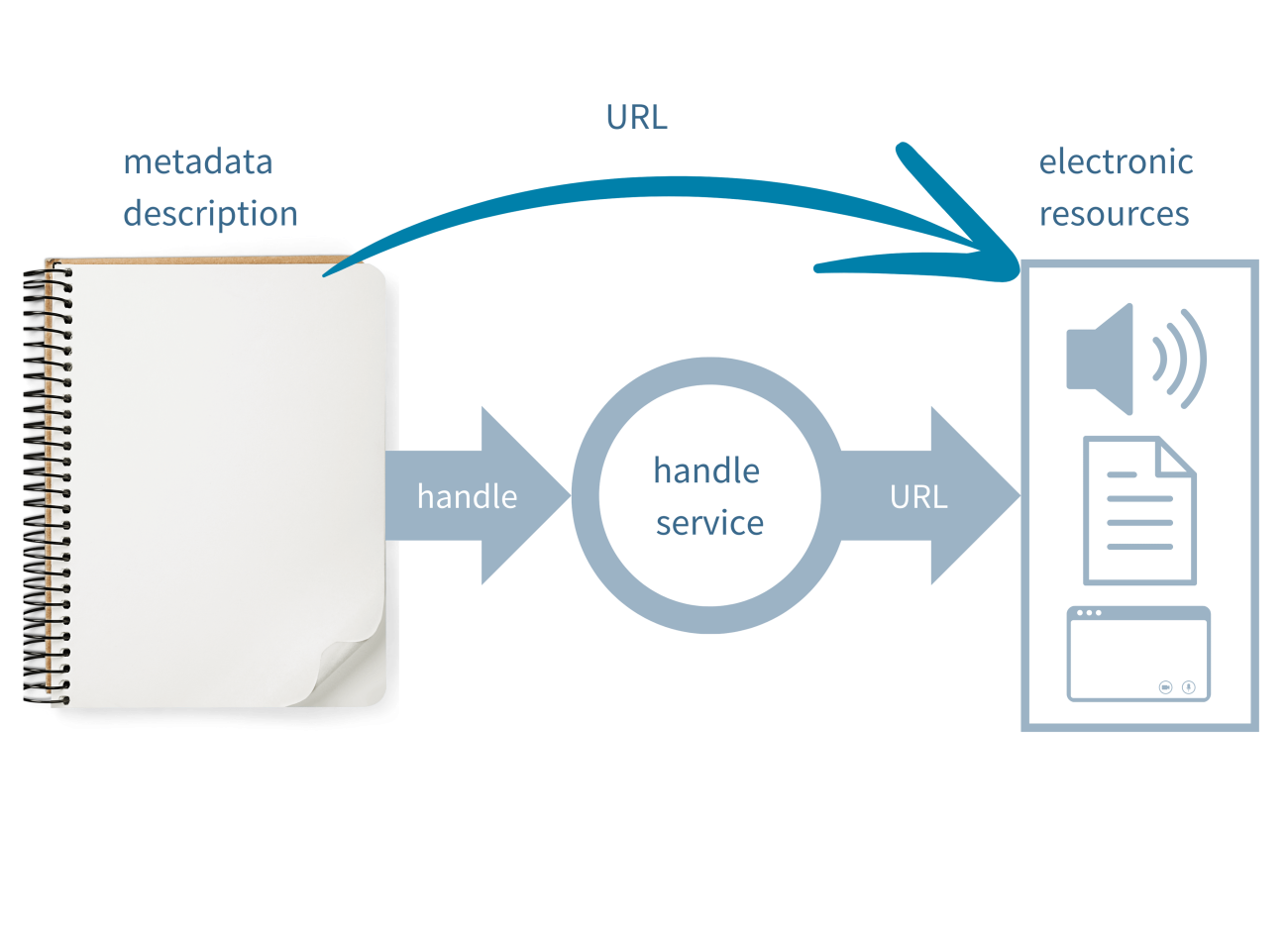A major problem when citing and using digital (language) resources is the stability of the links used. After some time, many URLs start decaying, for example because the resource is moved to another server, or the domain name of an organisation changes. This process is widely known as link rot.

By using persistent identifiers (PIDs) it is possible to anticipate such unavoidable changes. Instead of citing the direct URL, one extra level of indirection is introduced, where each resource gets its own abstract code (a handle). Upon access, the user is redirected to the URL that is associated to the handle. If the physical location of the resources changes, the only thing that needs to be done is making a change to the associated URL. As such, using persistent identifiers leads to citable references that are immune to link rot.
Persistent Identifiers in Practice
The use of persistent identifiers is deeply integrated into the CLARIN infrastructure. They are a requirement for B-centres and form part of the Virtual Collection Registry.
CLARIN centres can acquire either:
- Handles via the ePIC consortium, a collaboration between several major computing centres to offer stable and reliable persistent identifier services
- DOIs via DataCite - where CLARIN ERIC is a consortium member.
Learn More
- Document: Persistent identifier policy summary
- Document (older but still informative): Federation Foundation - PIDs
All PID-related FAQs in the CLARIN Forum
Technical Details
For more information on the technical details, see the For Infrastructure Developers section.